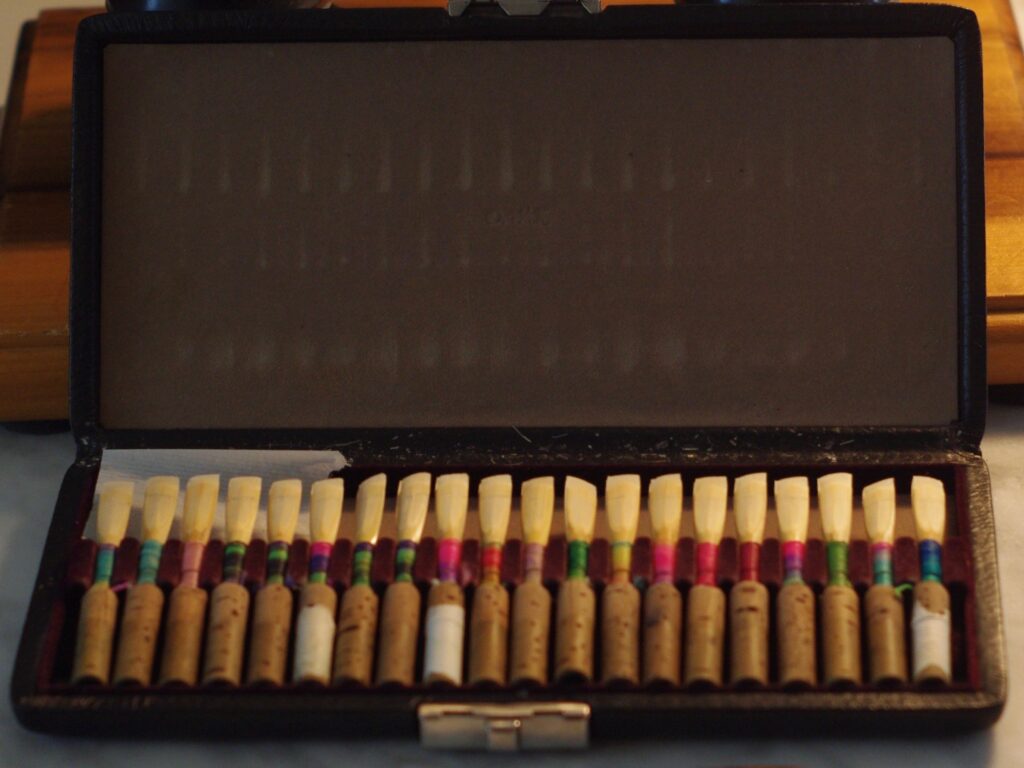Reed Information
The reed is of utmost importance to playing the oboe. The reed is the instrument, and the oboe is the amplifier. Reeds are fragile. They are made of organic material (arundo donax), and care must be taken when handling a reed. Even with utmost care a reed will die after being played on, anywhere from one week to a few weeks. Reeds must be constantly replaced to ensure success on the instrument.
The tip of the reed is the thinnest part, and most fragile.
Purchase a well-made reed case, for at least 6 reeds, if not 12. The reeds should be placed with the cork on the raised ribbon. This allows one to press down on the end of the cork tube and pop up the reed in order to grab it. Do not grab the reed by the tip, or anywhere on the cane!
ALWAYS soak your reed in water for a few minutes before playing. If you forgot your soaker, or do not have one, place the reed under running water for 20-30 seconds, allowing the water to run through both ends of the reed. Then let the reed soak up that water for a few minutes. You can purchase a reed soaker, or an an old jam jar, or pill bottle will work just as well.
When the reed is in the oboe be aware of what the reed might touch. Do not let it touch your shoulder, long hair, or braces! If you have braces be very careful when the reed is inside your mouth. The braces can easily tear up the fragile tip of the reed. As you learn to play you will develop a sense of where the reed is in space vs. where you and your mouth are.
Learn to place the reed delicately on your lip while it's in an "oooh" shape, and then roll in. Avoid placing the reed on your lip when the lip is already over the teeth. Instead, make a whistle, place the reed on the bottom lip, and then roll in to form your embouchure.
